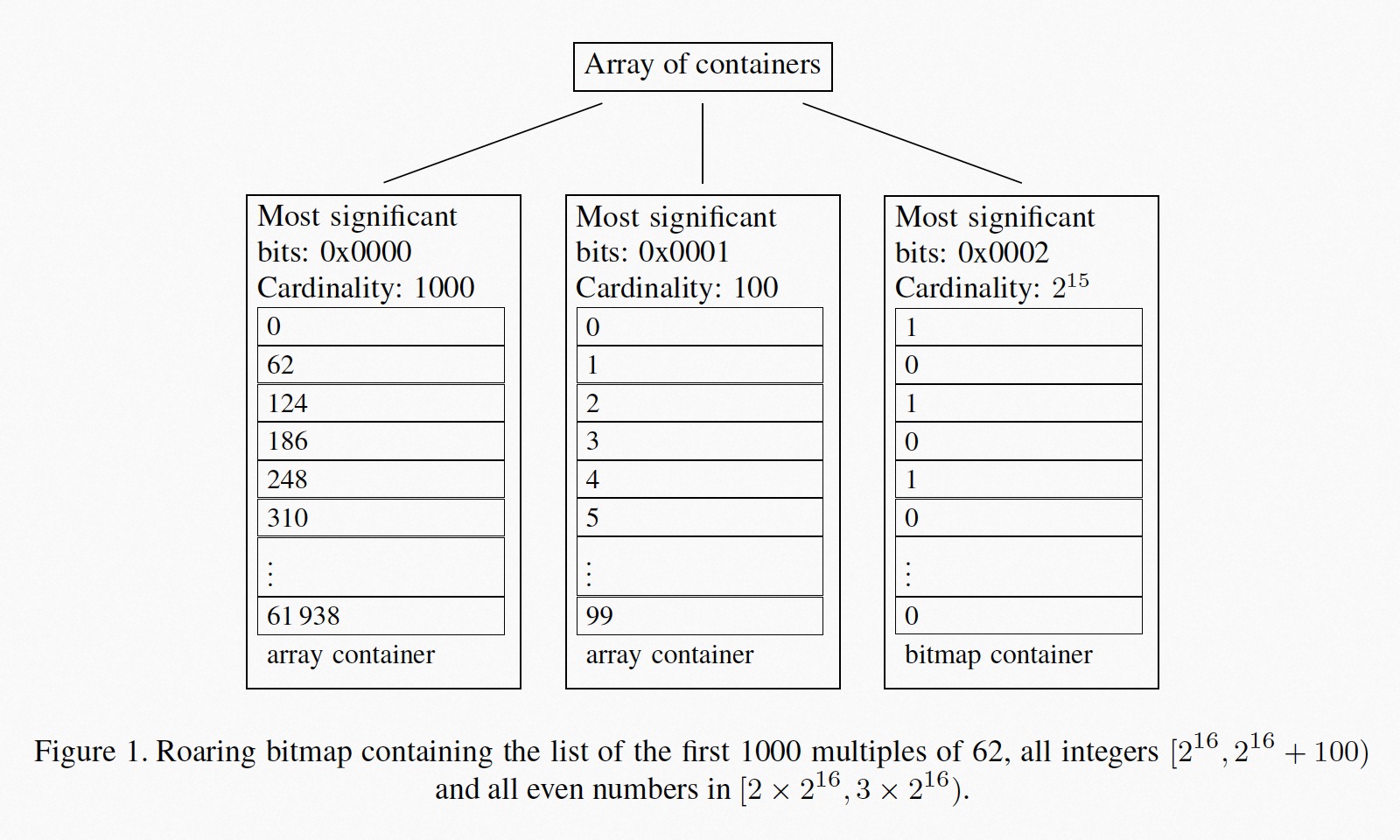Better bitmap performance with Roaring bitmaps
Software: Practice and Experience Volume 46, Issue 5, pages 709-719, May 2016
https://arxiv.org/abs/1402.6407
bitmap 常被用作数据库和搜索引擎的索引,通过比特级别的并行,可以显著加速查询。但稀疏的 bitmap 可能会占用非常多内存,很多数据结构通过压缩来减少内存使用,如 WAH(Word Aligned Hybrid compression scheme) 和 Concise(Compressed 'n' Composable Integer Set),而且它们大都跟随 Oracle 的脚步,使用 RLE 来压缩 bitmap。不同于这些结构,Roaring bitmap 使用 packed array 来压缩 bitmap。
当 bitmap 的基数(Cardinality,后用 S 表示)所占 bitmap 位数 n 较大时,即 |S| > n/64 时,使用未压缩的 bitmap 通常优于 arrays、hash sets、trees 等数据结构,当 n/10000 < |S| < n/64 时,压缩的 bitmap (如 Concise)通常为更合适的选择。
Roaring bitmap 将 32-bit 的索引([0,n)) 进行分区,每个 chunk 代表的所有值其高 16 相同。使用不同的容器来表示该 chunk 中所存储数值的低 16 位。当 chunk 中的值不多于 4096 个时,使用排序的 16-bit 整型数组来表示,当多于 4096 个数值时,使用 2^16 位的 bitmap 来表示。
Thus, we have two types of containers: an array container for sparse chunks and a bitmap container for dense chunks.
4096 为界限保证了在 container 层面,每个数值占用的内存不超过 16 bits。
we either use 2^16 bits for more than 4096 integers, using less than 16 bits/integer, or else we use exactly 16 bits/integer.
容器存储在一个动态变化的有序数组中,根据容器的高 16 位排序,作为 roaring bitmap 的一级索引。当 n = 1000 000 时,一级索引只需保存 16 个 entries,这使得该结构可以常驻在 CPU 缓存。一个简单的例子如下图:

Paper 中有一个 typo:
We assume that there are far fewer containers than integers. More precisely, we assume that the density typically exceeds 0.1% or that n/|S| > 0.001.
应该为 |S|/n > 0.001。
roaring bitmap 的存取操作和逻辑操作涉及到两种容器之间的转换,算法并不复杂,但有很多可以优化的点,详见论文。
References:
[1] Engineering Fast Indexes for Big Data Applications
[2] Engineering Fast Indexes for Big Data Applications(deep dive)
[3] Roaring Bitmaps publications